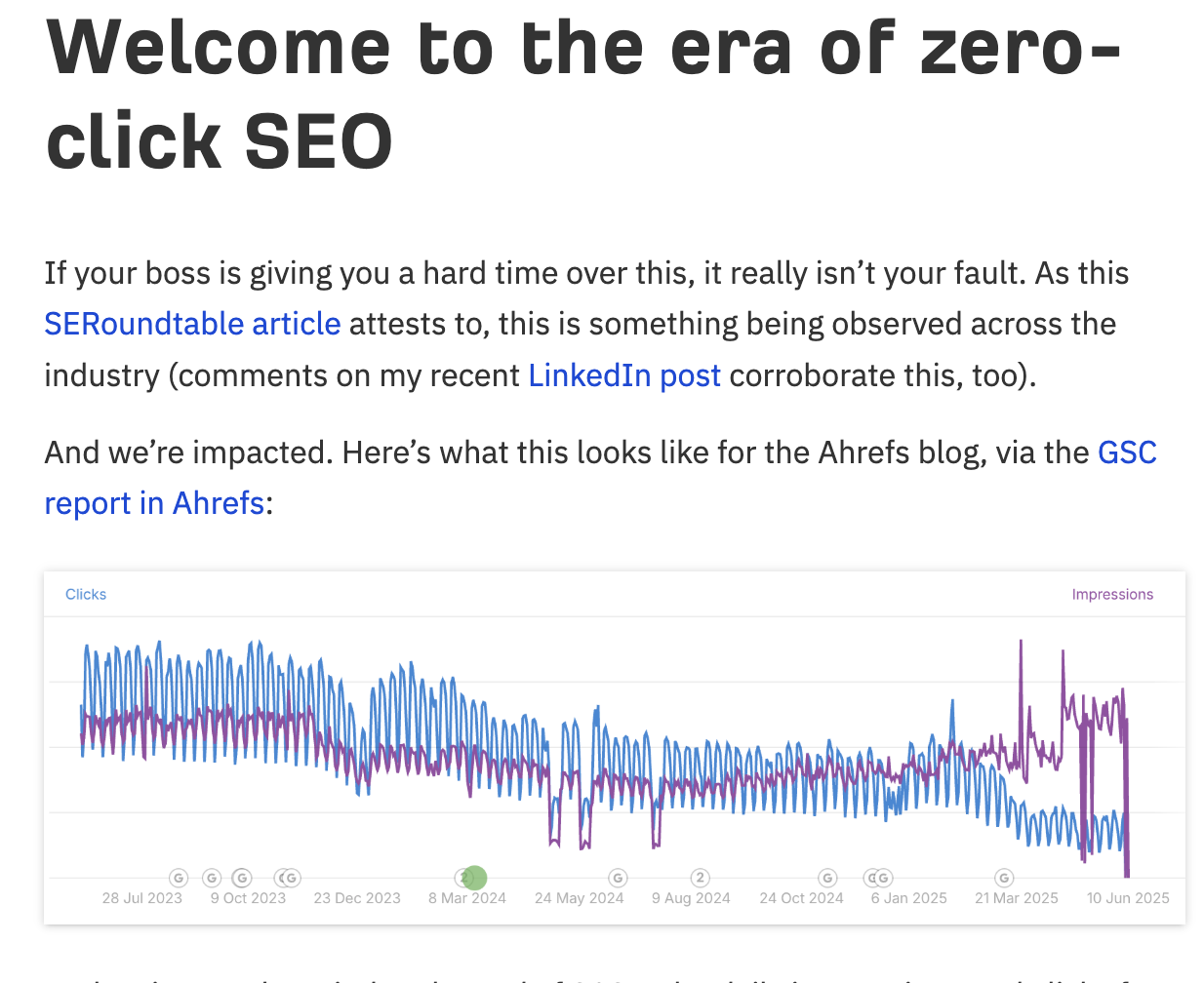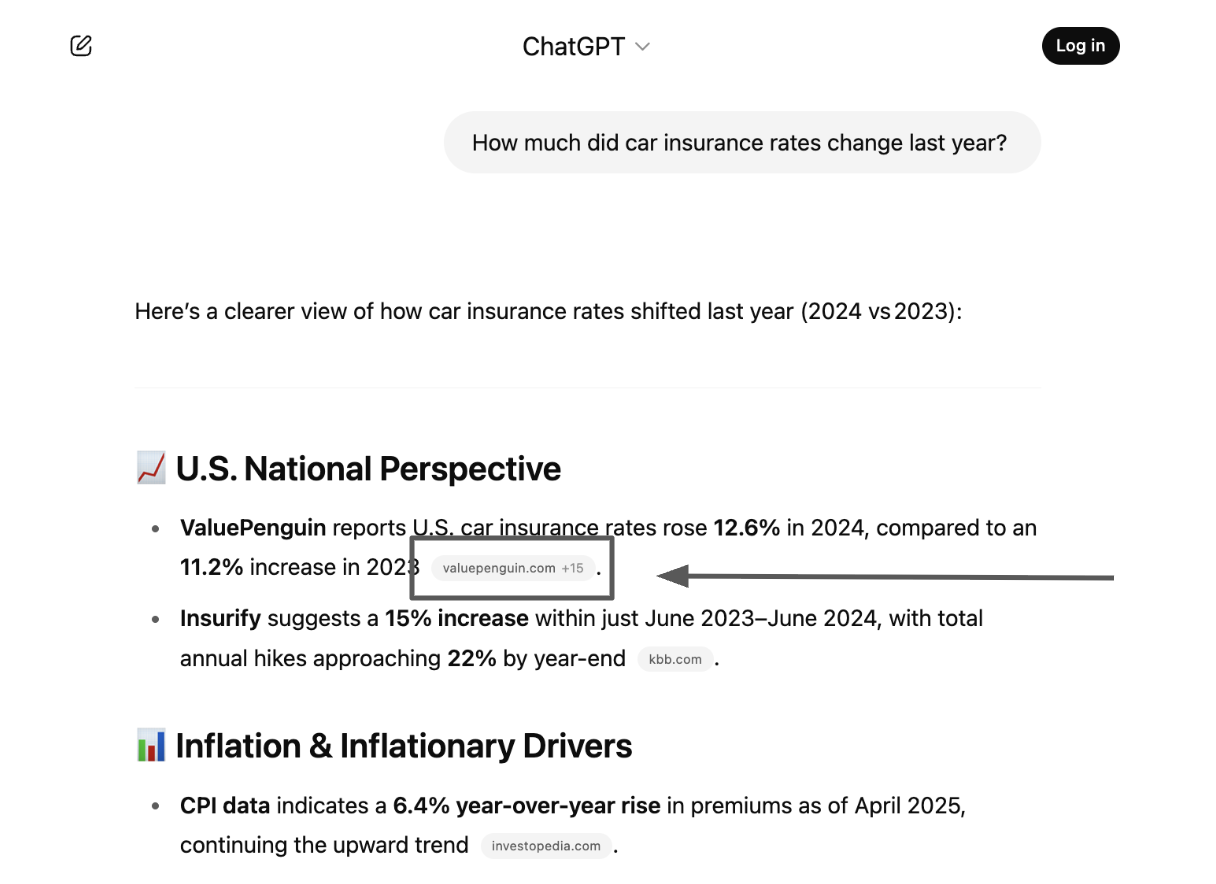It’s the end of TOFU as we know it.
For years, brand marketers and SEO professionals relied on generic “How to do ___” and “What is ___?” content as the bedrock of their search strategy. Mastered by HubSpot and emulated by millions, this approach was designed to win traffic from top-of-funnel (TOFU) queries, educate potential customers, and slowly guide them toward conversion.
This led to the creation of some really valuable (as well as some really useless) content. But most importantly, it resulted in *a lot* of content.
By 2020, the internet was drowning in TOFU content. Pages and pages of regurgitated advice on optimized pages competed in a race to the bottom: whoever could stuff the most keywords, wrangle the most backlinks, and game the algorithm won. And yet, it persisted. Old habits die hard, and if you didn’t do it, your competitors would. Call it the content marketing prisoners dilemma.
Then came the fall of the king. Earlier this year, HubSpot’s traffic reportedly dropped by as much as 80%. They publicly acknowledged the shift, pointing to Google’s AI Overviews as a new variable marketers must contend with. This was prescient. If Hubspot was first to the party on “Inbound” content, they were the canary in the coalmine for AI Overviews reducing traffic to TOFU content.
Every marketer is facing the same reality: more impressions, fewer clicks. It’s what some are calling “The Great Decoupling,” where visibility no longer drives traffic.

Ryan Law’s “crocodile post” explains it best →
But AI Overviews are just the start.
The real disruption is happening with answer engines like ChatGPT, Perplexity, and Gemini. And here’s the uncomfortable truth no one has fully acknowledged yet:
There will be no brand mentions for most basic top-of-funnel queries.
Try it yourself. Ask ChatGPT:
- “How to hire salespeople”
- “Things to consider when purchasing car insurance”
- {insert your go to top of funnel query}
No sources. No citations. Just generalized summaries. No links to your “Ultimate Guide” or your perfectly optimized blog post.
The New Rules: Data or Die
But there is one scenario where sites do get cited: when the answer requires data—especially when that data is original, recent, or changes frequently.
Try asking the following to ChatGPT:
- “Which counties in the U.S. are at highest flood risk?”
→ You might see LawnStarter or FEMA-linked studies referenced.
- “What percentage of Americans plan to travel this summer?”
→ You’ll often get Morning Consult or Statista.
- “How much did car insurance rates change last year?”
→ You’ll likely see results citing Experian or ValuePenguin

Who is being cited may have changed by the time you read this, but what’s important is that brands are being cited.
These aren’t traditional blog posts—they’re data reporting. And they are a glimpse into the future of what it means to invest in the top of the funnel.
More examples of brands leaning into this strategy:
- Hone Health publishes testosterone and men’s health benchmarks backed by lab data.
- LegalZoom has published studies on the rise of side hustles and new business formation trends.
- Yardi Matrix is frequently cited for real estate market data.
- GoodRx produces price trackers and medical cost indices that get cited in media and LLMs alike.
- Canva even published a visual “State of Creativity” report full of usage data and survey insights.
These brands are building visibility, not by shouting louder, but by saying something new.
We’re entering a new cycle where insight > information.
TOFU is dead. Long live TOFU.
The brands that use content to build brand in the answer engine era won’t be the ones producing the most content, or the longest content, or the most keyword rich content… but those publishing the most original and trustworthy data. With that in mind, here are three predictions for what’s ahead in the next year or two:
- Brands will start hiring economists, statisticians, and data journalists.
A few savvy brands are already ahead of the curve. Experian, Ramp, LinkedIn, Redfin and Realtor have all hired in-house economists, and are effectively breaking their own news. Expect many more brands to follow suit over the next 24 months.
- TOFU content will shift back toward value.
Forget the keyword-stuffed fluff of years past. Now it’s about thoughtful stories backed by data, sharp analysis, or a fresh point of view.
- LLM visibility will become the new KPI.
Just as PR teams once tracked media mentions, they’ll soon monitor brand citations in ChatGPT, Perplexity, and Google’s AI Overview. This is already happening quietly, and the tools will soon catch up.
It’s not that top-of-funnel is dead. It’s that we need to stop thinking of it as a blog post.
In the age of answer engines, the new top-of-funnel is a well-analyzed dataset, a compelling chart, a piece of insight cited in a news article the algorithm can’t find anywhere else.
And the brands that figure this out first? They’ll own the next decade of search.
Noah Greenberg is the CEO of Stacker, the first content distribution platform built for earned reach. He’s led the company in redefining how brands and publishers collaborate, with over 4,000 news outlets using Stacker to enhance coverage. A Forbes 30 Under 30 honoree, Noah previously helped scale Graphiq, later acquired by Amazon.
Featured Image Credit: Photo Illustration by Stacker // Shutterstock, Canva